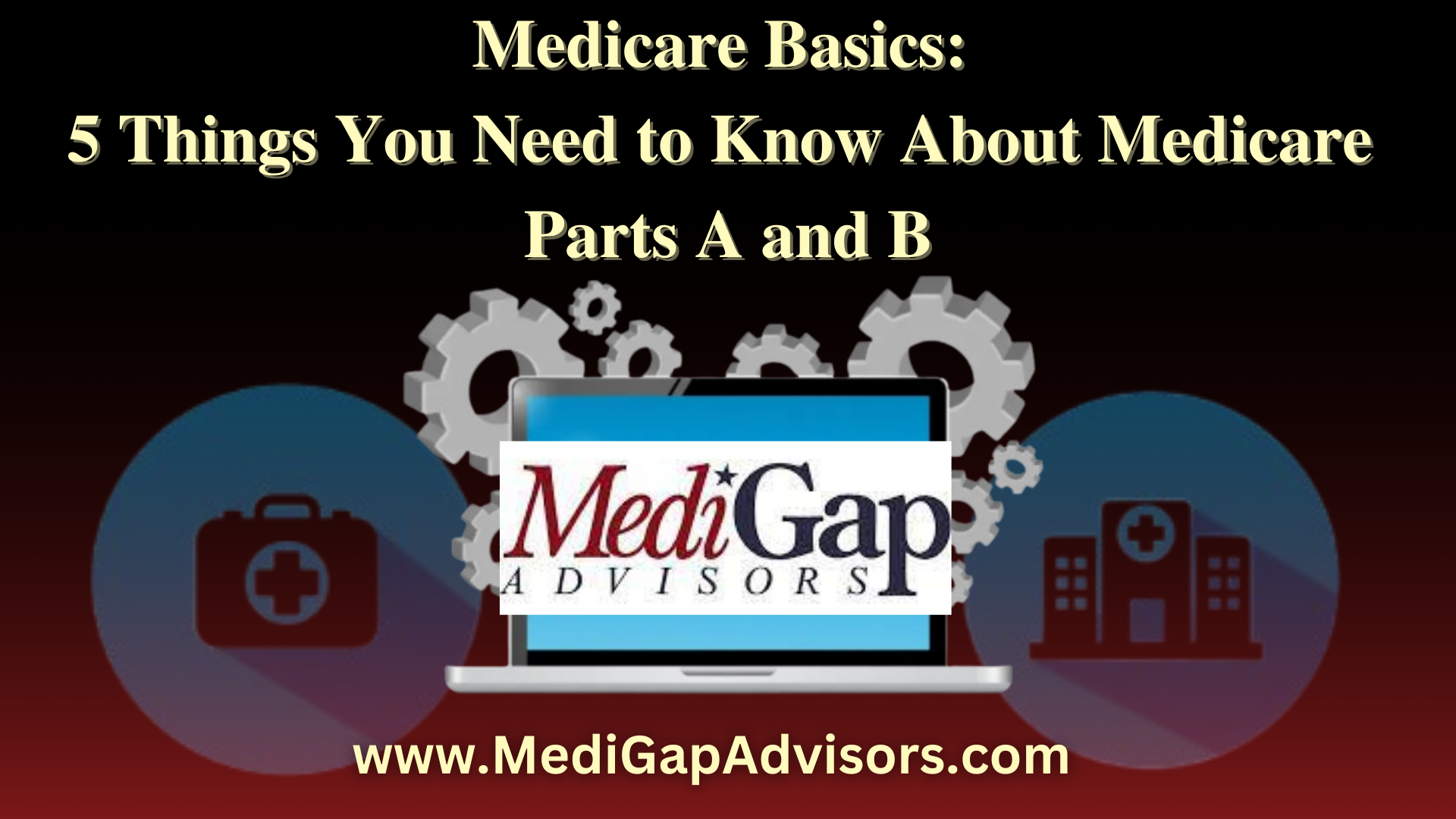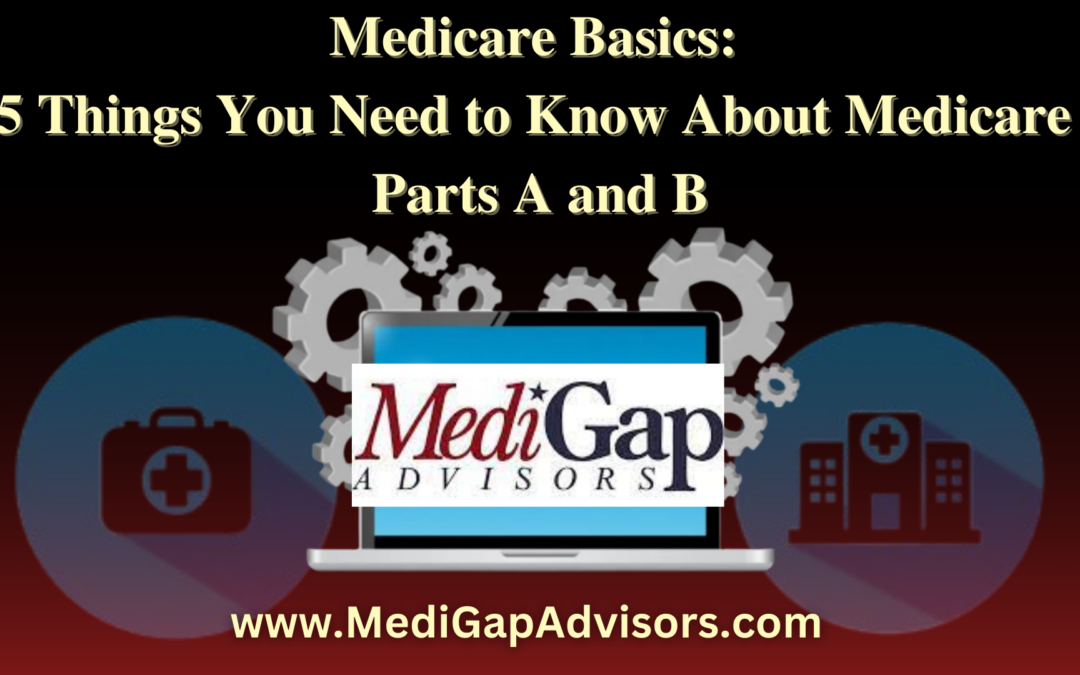New to Medicare? Still can’t understand your Part A and Part B coverage?
In this article, I’ll walk you through everything you need to know about Medicare Parts A and B, ensuring you’re well-equipped to make informed decisions about your healthcare coverage.

Medicare Parts A and B
1.) Medicare Is Not Enough to Cover Your Medical Costs
Medicare includes Medicare Part A (Hospital Insurance) and Medicare Part B (Medical Insurance).
Part A covers inpatient hospital care, doctors’ services, tests, and preventive services. You pay for services and items as you receive them. Eligibility for Medicare coverage for Part A and Part B services requires lawful presence in the U.S.
While Medicare Part A does cover some hospital expenses for free, Part B comes with a monthly cost. In 2024, the standard premium is $174.70 per month. That doesn’t include any costs for a Part D drug plan, copayments, coinsurance, or the Part B deductible.
The annual deductible for Medicare Part B in 2024 is $240.
The result is that most people pay way more out of pocket than they expect to. Planning for these costs is essential for anyone looking to protect their savings account.
2.) The “Gaps” in Medicare Can Be Filled [Medicare Supplement Plans]
With a Medigap plan, it’s possible to get low-cost coverage for the things that Original Medicare doesn’t cover.
This includes common out-of-pocket expenses including:
- More time in the hospital if you need it (Original Medicare has a limit)
- Your Part B coinsurance or copayments
- Your Medicare Parts A and B deductibles
- First 3 pints of blood if you need a transfusion
- Foreign travel emergencies (Original Medicare doesn’t cover overseas medical expenses)
- Covers the coinsurance amount for skilled nursing facility care, which Medicare covers only for a limited time.
- Some plans cover expenses for recovery at home following a hospital stay.
- Certain plans may cover coinsurance or copayments for Medicare-covered preventive services not fully covered by Medicare alone.
There are a number of Medigap plans to choose from, each with a different set of additional benefits.
Click here to learn more about Medicare Supplement insurance plans.
3.) You Can Get One-Stop-Shop Coverage by Switching to Medicare Advantage
While Medigap plans are standalone, supplementary insurance plans, Medicare Advantage (MA) plans combine the benefits of Original Medicare with additional coverage, all in one comprehensive plan.
In addition to Part A’s hospital care and Part B’s basic doctor services, MA plans can also cover:
- Vision care: This may include routine eye exams, glasses, or contact lenses.
- Dental care: Coverage for routine dental exams, cleanings, and other dental services.
- Hearing care: Benefits for hearing exams, hearing aids, and related services.
- Prescription drug coverage (Part D): Many MA plans include prescription drug coverage, unlike Original Medicare, which requires a separate Part D plan.
MA plans are offered by private insurance companies approved by Medicare. They may also offer additional benefits like fitness memberships or telehealth services.
It’s essential to review each plan’s details, including costs, coverage, and provider networks, to choose the one that best meets your healthcare needs.
Click here to learn more about Medicare Advantage plans.
4.) The Cost of Your Medicare Could Vary with your Income
The cost of Medicare Part B and Part D premiums can vary based on your income.
For 2024, here are the income thresholds for higher premiums:
Single Filers
- Less than or equal to $103,000: Part B and Part D premiums – Standard rate
- $103,001 to $129,000: Part B – $69.90, Part D – $12.90
- $129,001 to $161,000: Part B – $174.70, Part D – $33.30
- $161,001 to $193,000: Part B – $279.50, Part D – $53.80
- Greater than $193,000: Part B – $384.30, Part D – $74.20
Married Couples Filing Jointly
- Less than or equal to $206,000: Part B and Part D premiums – Standard rate
- $206,001 to $258,000: Part B – $69.90, Part D – $12.90
- $258,001 to $322,000: Part B – $174.70, Part D – $33.30
- $322,001 to $386,000: Part B – $279.50, Part D – $53.80
- Greater than $386,000: Part B – $384.30, Part D – $74.20
These thresholds determine the Income-Related Monthly Adjustment Amounts (IRMAA) for Medicare premiums in 2024.
5.) Medicare Has Multiple Enrollment Periods You Need to Know About
They include:
- Initial Enrollment Period: This period begins three months before you turn 65 and extends for three months after your birthday. If you’re already receiving Social Security benefits, you’ll be automatically enrolled in Medicare Parts A and B. If not, you must actively enroll yourself to avoid delays in coverage.
- General Enrollment Period: Medicare’s General Enrollment Period is from January 1st to March 31st each year. It is for individuals who missed their Initial Enrollment Period for Part B. Coverage begins on July 1st of the same year. Late enrollment may result in a penalty unless you qualify for a Special Enrollment Period.
- Open Enrollment Period: Annually from October 15th to December 7th, the Medicare Open Enrollment Period allows you to make various changes to your coverage.
You can switch from Original Medicare to Medicare Advantage, switch between different Advantage plans, or switch back to Original Medicare. You can also add, drop, or change your Part D prescription drug plan.
- Special Enrollment Period: You may qualify for a Special Enrollment Period if certain life events occur, such as losing employer group health coverage or moving to a new area with different Medicare plan options. This period typically lasts for eight months from the date of the qualifying event.
Become a Medicare Parts A and B Expert with MediGap Advisors
Looking to learn more about Medicare? Bookmark the MediGap Advisors Blog for up-to-date info and advice about Medicare, Medicare Advantage, Medigap, and retirement planning.
Or go to Amazon and get a copy of our book, The Medicare Playbook. There we spell it all out, and make it easy.
Here are some additional articles on Medicare Parts A and B: The Medicare Annual Open Enrollment Period is Almost Here – What You Need to Know | What’s the Difference Between an MSA and a Medicare MSA Plan?
Here are some additional pages related to this article: Whether You’re New to Medicare or Not, Know Your Medicare Supplement Options | Medicare 101: How Does Medicare Work

Tom Lockwood is a Personal Benefits Manager at MediGap Advisors. Tom has a passion for bringing clarity to those confused about Medicare. He is an authority on Medicare, Medicare supplement plans, Medicare Advantage plans, and Part D prescription drug plans. Read more about Tom on his Bio page.

